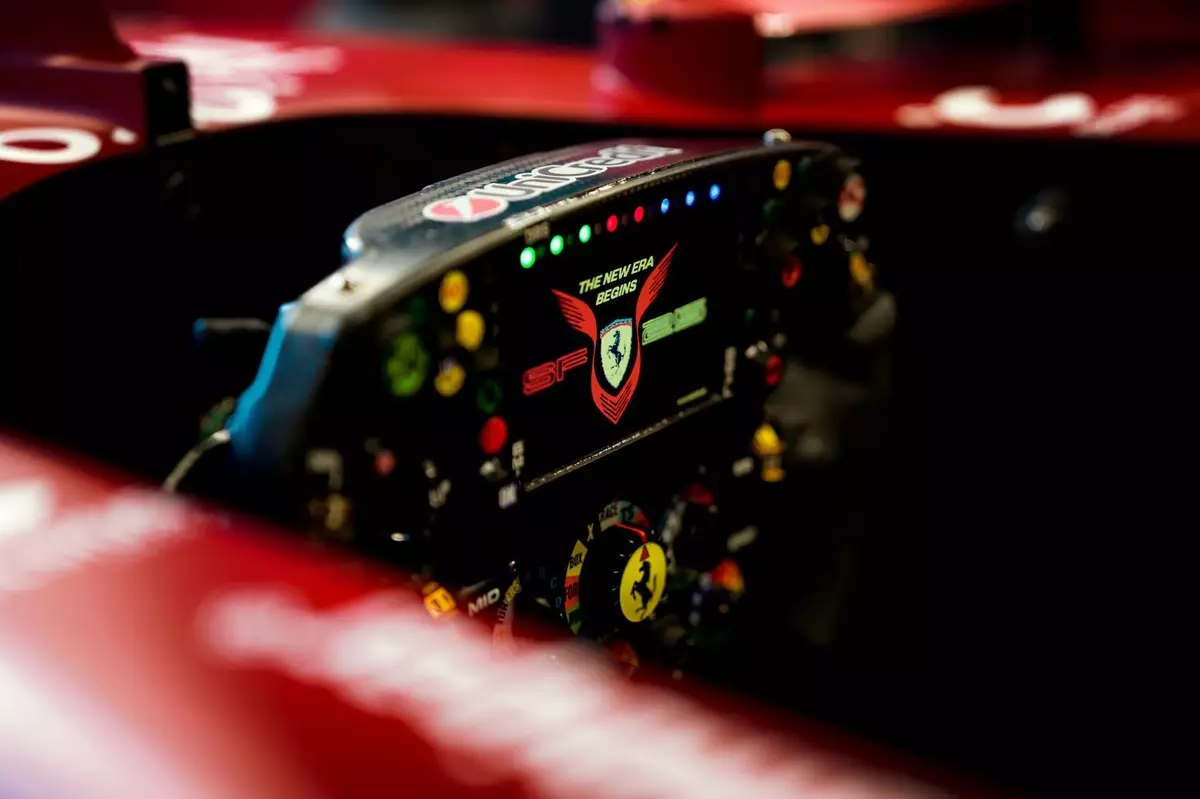Lewis Hamilton’s move to Ferrari has sparked renewed interest among racing enthusiasts and pundits alike. This transition is not merely a change of color on the track but an evolving strategy aimed at maximizing performance while adapting to a new vehicle philosophy. In the early races of the season, particularly in Australia and China, the performance has been mixed; however, Hamilton’s sprint pole and victory in Shanghai signal a promising upward trajectory. This success offers insight into how Hamilton, a seasoned driver with a formidable reputation, is navigating uncharted waters as he integrates his extensive experience into Ferrari’s 2025 car.
Driving for Mercedes for over a decade, Hamilton’s muscle memory regarding car handling has been honed to an extraordinary level. The unique nuances of the Silver Arrows’ engineering molded his driving style, so adapting to a fundamentally different machine presents an intriguing challenge. The tight margins at the front of Formula 1 mean that every adjustment, no matter how minute, can significantly impact performance. Ferrari’s innovative approach in customizing the car to align with Hamilton’s innate driving preference is an essential step in enhancing his competitiveness.
Customizing the Driving Experience
Ferrari’s attention to detail is evident in how they’ve tailored the steering wheel to suit Hamilton’s style. Gone are the days when a driver’s unique requirements were overlooked; now, we see a bespoke approach that integrates Hamilton’s preferences into Ferrari’s engineering ethos. The early implementation of minor yet effective changes—like a personalized welcome message on the steering wheel—highlights the team’s commitment to ensuring Hamilton feels at home in the cockpit. However, these alterations are far from purely aesthetic; they signify a deeper understanding of how psychological comfort can impact performance.
The engineering team at Ferrari has delved deep into customizing Hamilton’s driving tools, from ergonomics to software programming. For instance, moving away from Charles Leclerc’s standard adjustments to implement settings closer to what Hamilton enjoyed at Mercedes suggests strategic foresight. The inclusion of various metrics on Hamilton’s screen—such as engine mapping indicators and battery state messages—provides him with the comprehensive feedback necessary to push the boundaries of performance. This customization isn’t merely about satisfying Hamilton’s preferences but instead about optimizing the synergy between driver and machine.
A Shift in Data Management
Data management plays a crucial role in modern racing, where real-time information can dictate success. The striking differences between how Ferrari and Mercedes handle these critical elements can be pivotal. At Mercedes, the engine management was simplified into a single knob, allowing drivers to focus on fewer variables. In contrast, Hamilton’s new arrangement with Ferrari, which breaks down power management into multiple metrics, reveals a nuanced shift in philosophy. This means Hamilton can actively monitor engine and hybrid management settings independently, adding a layer of control over his performance—a smart move considering his history with Mercedes.
Moreover, Ferrari’s innovative use of multiple metrics allows Hamilton to stay constantly informed about various parameters, such as temperature tolerances and fuel consumption. Many drivers prefer a streamlined interface, yet Hamilton’s request for comprehensive feedback indicates his desire to be as well-prepared as possible. The unique adjustments showcase how a team can interpret and respond to the psychological needs of a driver, ensuring Hamilton feels empowered rather than overwhelmed in the car.
Creating a Competitive Edge
Even the smallest modifications, such as the reallocation of temperature monitoring and management options on the steering wheel, can have an outsized impact on driver confidence and performance. With Hamilton in charge of the steering wheel settings—defined elements like the quick mode selector and temperature metrics—Ferrari’s commitment to creating a personalized experience is evident. These adjustments don’t merely accommodate Hamilton’s preferences; they also demonstrate Ferrari’s ability to adapt its longstanding operational methods for maximum effect.
In a world where the competition is fiercely tight, balancing personalization with broader racing strategy becomes critical. When a driver like Hamilton feels supported by their team in such a comprehensive manner, it builds an intimate connection between the racer and the vehicle—a potent cocktail that can fuel success on the track. By setting up an environment where Hamilton can easily access and operate his preferred metrics, Ferrari demonstrates they understand the delicate balance required to maximize the performance of a seasoned world champion.
Ultimately, while the adjustments might not translate into immediate, sweeping changes in race results, they lay the groundwork for a more stable and competitive foundation as Hamilton continues to adapt. The changes—rooted in an understanding and respect for Hamilton’s formidable past—may just allow him to find that winning edge as he seeks to conquer new challenges with Ferrari.

